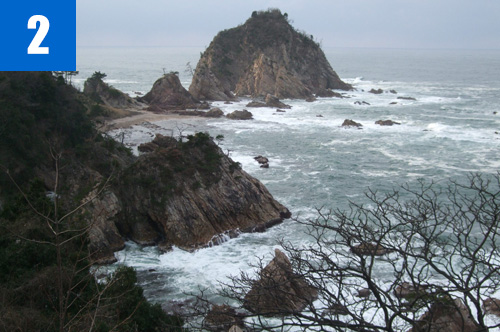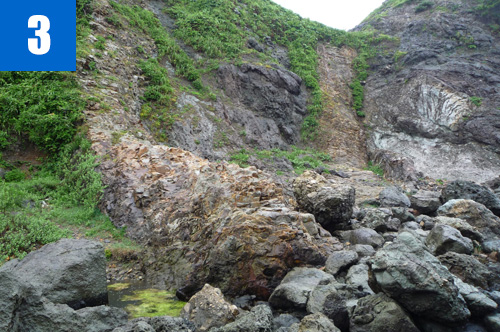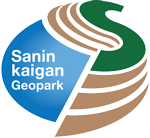This rocky coast consists of 30-million-year-old granite formed in the era when the Japanese archipelago was part of the continent and the Sea of Japan did not exist. The rough wave of the Sea of Japan and winter winds erode the granite rocks along fracture and faults, creating the unique coastal terrain of coastal caverns, boulders, and coastal platforms.
(1)Sengan Matsushima
This is a granite boulder with a coastal cavern formed by sea erosion along fracture. This is one of the symbols of the Uradome Kaigan Coast.
(2)Shirawara Kaigan Coast
Shirawara Kaigan Coast comprises a pebble beach of granite pebbles, and a sandy beach of quartz sand. There are the Natane Goto Islands including Natanejima Island and many coastal caverns. The coast is part of a marine park.
(3)Haneobana Cape
The cape is mainly made of tuff breccia. The upper side of the cape is covered with the lava of Pliocene andesite. Around the cape, you can observe a wide variety of landscapes formed by sea erosion as well as spectacular rhyolite dykes.
Uradome Kaigan Coast Genki Festival
A summer festival is held on the Uradome Kaigan Coast. At the finale of the festival, there is a firework display accompanied by music. There are many stalls in and around the festival venue. You can also board the Fire Excursion Ship to enjoy the fireworks.




